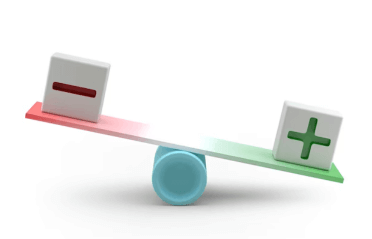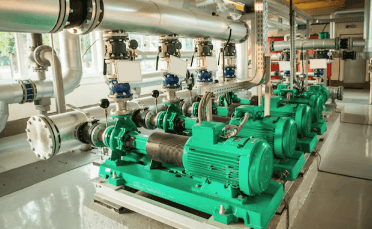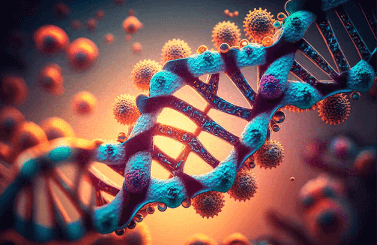Question
(i) Energy of a nuclear reactor
(ii) Liberation of energy due to some exothermic chemical reactions
(iii) Resistance heating in electrical appliances
Which of the statements made above are correct?
a.
1, 2 and 3
b.
1 and 2
c.
1 and 3
d.
Only 2
Posted under Heat Transfer
Interact with the Community - Share Your Thoughts
Uncertain About the Answer? Seek Clarification Here.
Understand the Explanation? Include it Here.
Q. Notable example of uniform generation of heat within the conducting medium are (i) Energy of a nuclear reactor (ii) Liberation of energy due to some exothermic chemical...
Similar Questions
Explore Relevant Multiple Choice Questions (MCQs)
Q. For a plane wall of thickness l with uniformly distributed heat generation q g per unit volume, the temperature t₀ at mid plane is given by
View solution
Q. The temperature drop in a plane wall with uniformly distributed heat generation can be decreased by reducing
View solution
Q. Consider a slab of thickness δ with one side (x = 0) insulated and other side (x = δ) maintained at constant temperature. The rate of uniform heat generation within the slab is q g W/m³. Presuming that the heat conduction is in steady state and one dimensional along x direction, the maximum temperature in the slab would occur at x equal
View solution
Q. There occurs heat conduction and internal heat generation at uniform rate within the conduction medium itself in the following cases
(i) Drying of concrete
(ii) Chemical processes
(iii) Fuel elements in a nuclear reaction
Choose the correct option
View solution
Q. Suppose heat is conducted due to electrons
Where, i = I/A and p is the resistivity, then
View solution
Q. In case when both the surfaces of plane wall are at different temperature, we get an expression i.e.
T MAX – T W2 /T W1 – TW2 = (B + 1)²/4B
What is the value of B?
View solution
Q. Which one of the following materials are quickly heated by applying high frequency?
View solution
Q. Generally heat generated depends on some parameters. It is directly proportional to
View solution
Q. Consider a 1.2 m thick slab of poured concrete (k = 1.148 W/m degree) with both of side surfaces maintained at a temperature of 20 degree Celsius. During its curing, chemical energy is released at the rate of 80 W/m³. Workout the maximum temperature of concrete
View solution
Q. The insulating material used in dielectric heating is
View solution
Q. Unit of specific resistance is
View solution
Q. What maximum thickness of concrete can be poured without causing the temperature gradient to exceed 98.5 degree Celsius per meter anywhere in the slab? Consider a 1.2 m thick slab of poured concrete (k = 1.148 W/m degree) with both of side surfaces maintained at a temperature of 20 degree Celsius. During its curing, chemical energy is released at the rate of 80 W/m³. Workout the maximum temperature of concrete
View solution
Q. Dielectric heating apparatus consists of
View solution
Q. A slab of insulating material of thickness 6 cm and thermal conductivity 1.4kJ/m hr deg is placed between and is in contact with two parallel electrodes, and is then subjected to high frequency dielectric heating at a uniform rate of 140,000kJ/m³ hr. At steady state coefficients of combined radiation and convection are 42 and 48 kJ/m² hr deg. If atmospheric temperature is 25 degree Celsius, find surface temperatures?
View solution
Q. A 25 mm diameter egg roll (k = 1 W/m degree) is roasted with the help of microwave heating. For good quality roasting, it is desired that temperature at the center of roll is maintained at 100 degree Celsius when the surrounding temperature is 25 degree Celsius. What should be the heating capacity in W/m³ of the microwave if the heat transfer coefficient on the surface of egg roll is 20 W/m² degree?
View solution
Q. The constants of integration are to be determined from the relevant boundary conditions which are
(i) t = t w at r = R
(ii) q g (π L R²) = -k (2 π R L) (d t/d r)
(iii) Increasing temperature gradient
Choose the correct option?
View solution
Q. A concrete column used in bridge construction is cylindrical in shape with a diameter of 1 meter. The column is completely poured in a short interval of time and the hydration of concrete results in the equivalent of a uniform source strength of 0.7 W/kg. Determine the temperature at the center of the cylinder at a time when the outside surface temperature is 75 degree Celsius. The column is sufficiently long so that temperature variation along its length may be neglected. For concrete
Average thermal conductivity = 0.95 W/m K
Average density = 2300 kg/m³
View solution
Q. The temperature distribution profile for a solid cylinder is
View solution
Q. A slab of 12 cm thickness and generating heat uniformly at 10⁶ W/m³ has thermal conductivity of 200 W/m degree. Both surfaces of the slab are maintained at 150 degree Celsius. Determine the heat flow rate at the quarter planes
View solution
Q. Consider a convective heat flow to water at 75 degree Celsius from a cylindrical nuclear reactor fuel rod of 50 mm diameter. The rate of heat generation is 50000000 W/m³ and convective heat transfer coefficient is I kW/m² K. The outer surface temperature of the fuel element would be
View solution
Recommended Subjects
Are you eager to expand your knowledge beyond Heat Transfer? We've handpicked a range of related categories that you might find intriguing.
Click on the categories below to discover a wealth of MCQs and enrich your understanding of various subjects. Happy exploring!








